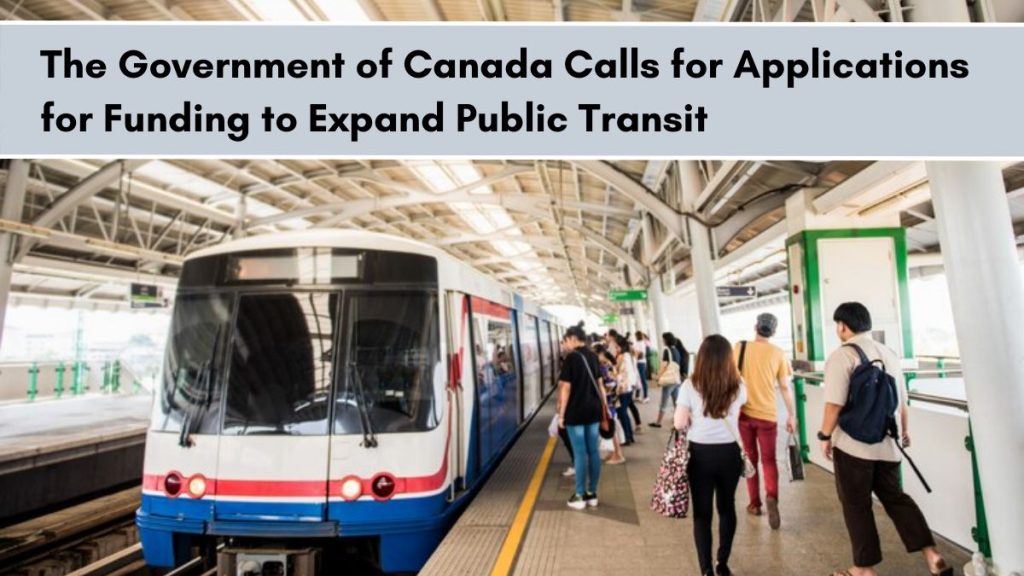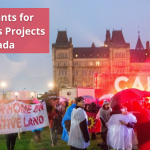
Public transit is an important part of any city’s infrastructure. Public transportation is important not only for getting around for millions of Canadians but also for keeping our air clean and creating excellent, middle-class employment across the country. The backbone of livable cities is public transportation. Better public transportation implies reduced traffic, shorter commutes, greater convenience, increased productivity, and lower pollution. Simply put, public transportation improves people’s lives.
For Canadians, the current 10-year government transit plan has been a game-changer. It’s supporting a long-overdue rush of transportation expansions in our cities and towns by distributing cash directly to transit agencies as predictable allocations. Modern transit, on the other hand, necessitates decades of constant planning, design, and execution. And we’re already looking ahead to 2027 when the federal plan is slated to expire. Right throughout Canada, local governments are poised to spearhead the next wave of system expansions to build better lives for our rising populations. Canadians expect us to keep pushing forward with transit upgrades in a confident and uninterrupted manner. This is also true.
It helps people get around quickly and efficiently, which reduces traffic congestion and pollution. It also makes it easier for people to connect with other parts of the city. That’s why the Government of Canada is investing in public transit expansion projects across the country.
The Government of Canada is looking for proposals to expand public transit across the country. The government has set aside up to $2.75 billion in total funding for this project, so there’s plenty of money available for deserving projects. Infrastructure Canada is now accepting proposals for the Zero-Emission Transit Fund’s planning and capital financing streams. Innovation in public transportation continues to develop innovative and imaginative solutions that support a cleaner environment while boosting the mobility of Canadians. Investing in zero-emission transit and school mobility choices helps communities breathe cleaner air, create jobs, and support Canadian manufacturing.
This is a great opportunity for Canadian cities to improve their public transportation infrastructure. If you’re interested in applying for funding, be sure to check out the guidelines on the Government of Canada website.
The Objective of Expanding Public Transit
The $2.75 billion Zero-Emission Transit Fund (ZETF) was established to enable the Government of Canada to fulfill its goal to acquire 5,000 zero-emission public transit and school buses, in collaboration with the Canada Infrastructure Bank (CIB). This grant will assist towns in electrifying their school and transit bus fleets, lowering emissions and operating costs in the long run. It takes decades to plan and build a transit system. That is why we urgently want a long-term transit funding framework so that we may continue to invest in transit projects that efficiently move more people, increase the local economy, and assist cities in meeting their environmental goals.
Quick Facts About the Public Transit Fund
1. Under the Planning and Capital streams of the $2.75 billion Zero-Emission Transit Fund, proposals are now being accepted. Eligible candidates can apply for financing to aid with planning and capital costs associated with the transition of public transportation systems to cleaner electrical power, such as the acquisition of zero-emission buses and related infrastructure. This Fund is closely aligned with the Canada Infrastructure Bank’s three-year Growth Plan goal to spend $1.5 billion on zero-emission buses.
2. The Active Transportation Fund, which has a budget of $400 million, is now taking proposals from qualified individuals who want to assist in developing new and extended networks of paths, bike lanes, trails, and pedestrian bridges. There is funding available for both planning and capital initiatives.
3. The Capital Projects stream of the $250 million Rural Transit Solutions Fund is now accepting submissions. Eligible candidates can apply for financing to help cover capital costs such as vehicle purchases or digital platforms, as well as to promote zero-emission transit options such as vehicle purchases. The Rural Transit Solutions Grant is the first federal Fund dedicated to developing transportation solutions for rural, isolated, and Indigenous areas.
4. These financial options are part of Prime Minister Justin Trudeau’s roughly $15 billion investment in public rail projects announced last year. Federal support for public transportation ensures that citizens of all sizes can get about.
Types of Projects Funded Under Zero-Emission Transit Fund
Projects are eligible for funding under two components of the Zero Emission Transit Fund:
· Planning Projects: Projects that help the development of future larger-scale capital projects, such as studies, modeling, and feasibility study, are eligible.
· Capital projects: Buses, charging and refueling infrastructure, and other ancillary infrastructure needs are all eligible capital projects.
Eligibility Criteria
A legal entity capable of entering into legally enforceable agreements must apply. Applicants must confirm that they fall into one of the following categories to be deemed, eligible recipients:
- Municipalities, municipal and regional administrations, and service districts created under provincial or territorial statute
- Territories vs. Provinces
- Public sector bodies that are entirely owned by a province, territory, municipal, or regional government and are founded by or under provincial or territorial statute or regulation (including transit agencies and school boards)
- Indigenous governing entities include, but are not limited to, a band council as defined by section 2 of the Indian Act. A First Nation, Inuit, or Métis government or authority that has been approved, given effect, and declared valid by federal legislation as a result of a Self-government Agreement or a Comprehensive Land Claim Agreement between Her Majesty the Queen in right of Canada and an Indigenous people of Canada. A First Nation, Inuit, or Métis government founded by or under federal or provincial legislation that includes a governance system.
- Indigenous development corporations are federally or provincially formed non-profit organizations whose mission is to promote Indigenous outcomes. They include organizations that support Indigenous populations in urban areas and First Nations living off-reserve.
- Private school bus operators working in collaboration with a public-school board, municipal, regional, or provincial/territorial authority; written confirmation of the relationship must be presented.
- Private sector accessible transit bus operators working in collaboration with a transit agency, municipal, regional, or provincial/territorial government; written proof of the relationship is required.
- Not-for-profit organizations that are federally or provincially incorporated, such as professional and industrial associations, non-governmental organizations (NGOs), and academic institutions, in collaboration with a qualified beneficiary. The partnership must be confirmed in writing, including the details of the relationship.
What Are the Guidelines for Applying for Funding?
If you’re interested in applying for funding, be sure to check out the guidelines on the Government of Canada website. In general, you’ll need to provide information about the project, including its cost and how it will benefit the city. You’ll also need to demonstrate that your city has a strong need for public transit expansion.
The guidelines for applying for funding are available on the Government of Canada website. Be sure to read them carefully before submitting your proposal. In general, you’ll need to provide information about the project, including its cost and how it will benefit the city. You’ll also need to demonstrate that you have the ability to complete the project.
Benefits of Expanding Public Transit
Public transit is an important part of any city’s infrastructure. It helps people get around quickly and efficiently, which reduces traffic congestion and pollution. It also makes it easier for people to connect with other parts of the city. That’s why the Government of Canada is investing in public transit expansion projects across the country.
Public transit has benefits, such as:
-Reducing traffic congestion and pollution
-Encouraging people to use less gasoline, helps reduce greenhouse gas emissions
-Making it easier for people to connect with other parts of the city
-Helping to create jobs and support the economy.
To Sum It All Up
These financing opportunities are critical to the government’s commitment to bold climate action that benefits both the environment and the economy. The transportation industry in Canada, which includes passenger automobiles and buses, is responsible for 25% of greenhouse gas emissions. Any effort to keep the air clean and establish vibrant communities must include good transportation. To combat climate change and achieve net-zero emissions by 2050, all levels of government must take significant action, which the Government of Canada will continue to do in collaboration with partners.











Leave a Reply